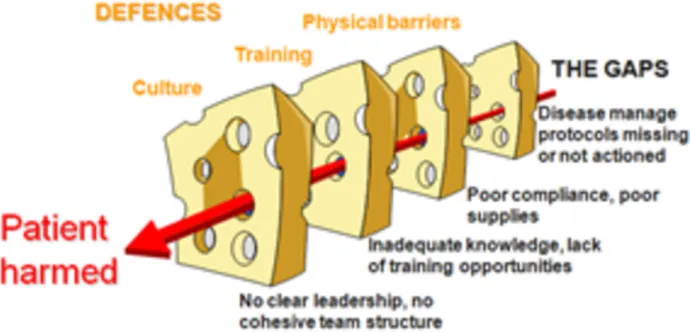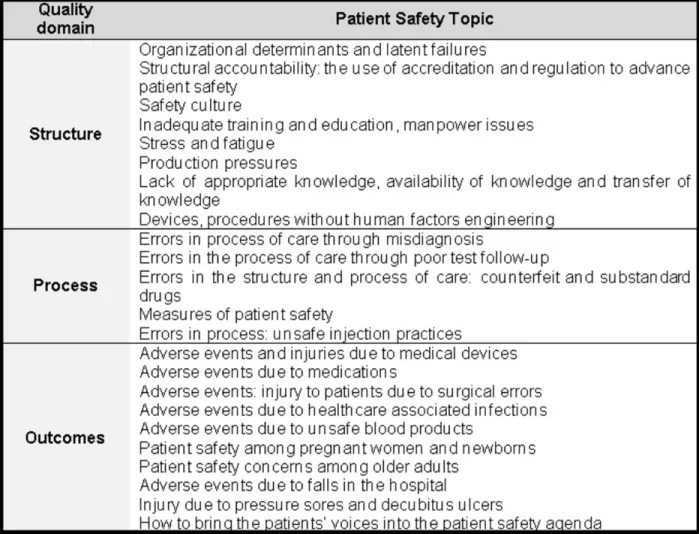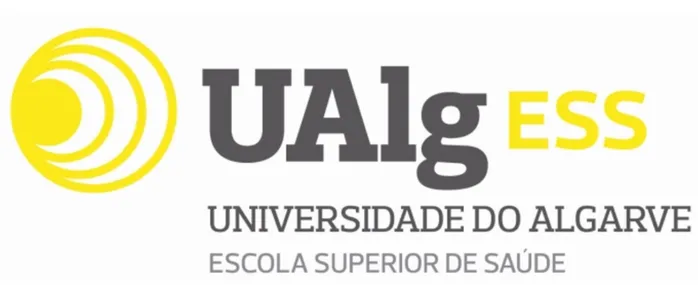B. Aspects of safety: what should be considered?
Poster No.: A-419Congress: ECR 2017
Type: Invited Speaker
Authors: K. B. Azevedo1
, C. A. Silva2, A. F. Abrantes1, L. P. Ribeiro1, A. M. Ribeiro1; 1Faro/PT, 2Évora/PT
Keywords: Radiographers, Professional issues, Management, Safety, Health policy and practice, Education, Quality assurance, Occupational / Environmental hazards, Outcomes
DOI: 10.1594/ecr2017/A-419
Any information contained in this pdf file is automatically generated from digital material submitted to EPOS by third parties in the form of scientific presentations. References to any names, marks, products, or services of third parties or hypertext links to third-party sites or information are provided solely as a convenience to you and do not in any way constitute or imply ECR's endorsement, sponsorship or recommendation of the third party, information, product or service. ECR is not responsible for the content of these pages and does not make any representations regarding the content or accuracy of material in this file.
As per copyright regulations, any unauthorised use of the material or parts thereof as well as commercial reproduction or multiple distribution by any traditional or electronically based reproduction/publication method ist strictly prohibited.
You agree to defend, indemnify, and hold ECR harmless from and against any and all claims, damages, costs, and expenses, including attorneys' fees, arising from or related to your use of these pages.
Please note: Links to movies, ppt slideshows and any other multimedia files are not available in the pdf version of presentations.
Learning objectives
1. To appreciate the core competencies and the radiographer's role as a key element to ensure patient safety at the imaging department.
2. To learn about the main concepts of patient safety related to the radiographer's professional responsibility and ethics outlines at the imaging department level from a public or private hospital or even at the private practice level.
3. To discuss ways to promote patient safety and quality in imaging.
Main
Imaging diagnostics exams increase annually. Actually, more than 3.6 billion radiologic exams with ionising radiation were performed in the entire world. This number illustrates well the increasing importance of Radiology Departments all over the world, many of them operating over their capacity.
Risk management methodologies are idealized to decrease, and ideally, eliminate the errors in the healthcare standard. Some unexpected errors can harm a patient, or conduct to delays or suboptimal outcomes. Human factors are a big part of the Radiology risk spectrum.
The main objective of risk managing in the Radiology Department must be the redution or elimination of possible damage to patients by recongnizing boundaries to radiology, decrasing risk by use of protocols and suitable structures, learning from errors and share that information and by training staff properly.
The Swiss cheese model tries to explain why errors occurs in a system, like in the healthcare (Fig. 1 on page 6) and is a simple example that allows to understand why errors that may harm the patient happen.
Important breaches concerning developing, transitional and developed countries that threat patient safety can be seen in Fig. 2 on page 7. These topics were divided in three quality domains: strucural factors, processes and domains.
Incident
A Patient incident is an episode or situation that could have, or did produced, a needless damage to a patient defined as an unintentional episode during the healthcare process that produces, could have produced or still might end in damage to the patient.
A patient incident can be as simple as a reportable circumstance, a near miss explained before, a no harm incident or a harmful incident (adverse event).
An incident type is a descriptive word for a class formed of a group of incidents with a commom origin.
Accident
An accident is an undesirable occurrence that affected the healthcare process and that comprmised, in a complete manner, the final intended outcome, resulting disturbances or major consequences that will be permanent.
Adverse Event
An adverse event is an unintended damage that resulted in momentary or perpetual incapacity, decease or extended hospital stay, and is caused by healthcare processes instead of patient's primary disease.
The adverse events are not mandotorily caused by errors or negligency attitudes, could avoidable or unavoidable and surely cause loss of eficiency and increase of monetary costs. Events can be divided in major events and minor events:
•Major events occur during a diagnostic or interventional procedure and threatens the
patient's life immediately, imposing immediate life saving actions. Usually, these events cause relevant physical damage.
•Minor events also occur during a diagnostic or interventional procedures but, unlike the major events, do not threaten patient's life immediately and directly. The most frequent minor events are called flux disturbances and they could be as simple as a phone ringing. However, these events seem to have a cumulative effect and can end in a major event.
Never Event
Never events are defined as serious, largely preventable patient safety incidents that should not occur if the available preventative measures have been implemented by healthcare providers. A never event as severe adverse events that cause damage to patient or even death, occuring always in an unexpecred way and are isolated in time. This type of event suggests the need for a research to identify processes or organizational flaws that could reveal the cause of that accident.These events define an organization's risk and safety and usually have close mediatic attention due to their outcomes. These events are those that never should have happened.
To be a never event, an incident must include the following criteria:
•The incident has strong probability for, or has caused severe harm or death;
•There is proof of the similar happening in the past;
•There is existing national international recommendations to prevent this event from happening;
The occurrence of this type of events indicate the organisation may not have put in place the right systems and processes to prevent the incidents from happening and thereby prevent harmful outcomes.
It is also an indicator of how safe the organisation is and the patient safety culture within that setting.
Danger, Risk and Error Chain
Danger is present when there is chance for potential adversity, that propiciates the occurrence of adverse events with damage as the outcome. Danger could also be seen as an agravating to the initial risk of a given procedure.
According to the same author, the inherent risk is an unavoidable risk, associated to a procedure, such as a given diagnositic or treatment, that is present even when done in ideal conditions, with the best equipment and best team possible. The aditional risk is what patients will be exposed, besides the inherent risk, when victims of safety errors or avoidable circumstances.
The error chain designates that a accident usually is consequence of a sequence of errors, involving the complex organizational causes such as the blun end and the sharp end. The only way to study these sequence of causes is the technique of root cause analysis.
How to increase patient safety?
The use of expert panel meetings is one way to increase patient safety in a Radiology Department. Based in the Experts Panel meeting where a clear indication of possible errors, conclusions and recommendations was done, the following measures can be used to increase patient safety.The experts can be selected from the staff and, below, it is possible to see an example of the outcome an experts panel meeting.
•Inadequate Technique
The inadequate technique when performing an exam or an intervention can occur due to the lack of enough training or knowledge in that given procedure. This possible error is specific to Radiographers and Radiologists.
Following this statement, the named professionals were encouraged to attend scientific meetings, national or international, in order to keep practice up to date. In a general meeting done at the beginning of this research, the bet in a good continuous professional development was emphasized. At the level of the Radiology Department, professionals were also encouraged to present research work by professional group, once a month, about a specific topic that were chosen by the number of votes in proposed topics by each professional.
•Wrong Patient
To identify correctly a patient is of major importance and each professional should make sure that the patient in the examination room is the right one. The best way to identify the patient is to ask the patient for the full name and date of birth and confront the information obtained with the wrist band or other method of identification that the patient carries with him. The name written in the bed or in the tag above the head should never be assumed
as correct. Again, in the general meeting with all the professionals, this method of positive identification and based in at least two indicators was emphasized.
•Wrong Procedure or Exam
The wrong procedure or exam might cause severe damage to the patient and, again, it is of major importance that each professional guarantees that the procedure or exam is the correct the indicated. Professionals were trained to make sure that the correct patient is in the examination room, that the correct examination is planned to be performed, the clinical history matches the requested examination or procedure, that the correct side is being examined or intervened and that the exposition markers (when applicable) are also placed correctly.
In the general meeting, professionals were advised to double check the identification of the patient and to speak up if something is not in accordance with the planned intervention or exam.
•Healthcare Associated Infections
The nosocomial infections, or infections associated to healthcare, are a major cause of co-morbidity in debilitated patients and might even lead to dead. To prevent these type of infection, a refresher course regarding this subject, were performed by the hospital Infection Control Commission for the Radiology Department. In this course, a practical part were included and professionals were trained to ensure the correct hand hygiene procedure with an alcoholic based solution and to wash hand correctly.
•Poor Professional Communication
Clear communication between professionals is crucial to ensure safe healthcare to patients. To ensure that good communication is improved, the Situation (What is going on with the patient or the situation), Background (What is the clinical background or context), Assessment (What do I think the problem is?) and Recommendation (What would I do to correct it) method was presented in a Radiology Department general meeting. This method were then trained by discussing problems that arose in the past in a type of brainstorming method.
•No Use of Handoffs Meeting
Gaps in patient care might be lost during one handoff. This is of greater importance when the examination or intervention of one patient continues from one shift to the other. Professionals that are about to leave should pass the relevant information to the direct colleague in an effective way. One of the key points that were addressed was the read back detail. This means that professionals were trained to repeat each information to the colleague that is passing the shift. This was a simple thing to include to the professionals daily routine and professionals were advised and examples were used in the general meeting.
•Contrast Administration
All the contrasts agents that are administered in the Radiology Department have the potential to cause an allergic reaction or develop some other undesired effect on the patient. To ensure that the contrast administration is safe, the maximum amount of data regarding the patient condition should be gathered. This topic is specific to Radiographers and Radiologists. The rule of check the creatinine level for each patient before contrast administration was imposed and the target professionals accepted this advice as a good
improvement in patient safety. Other checks such as previous allergic reactions and the existence of asthma were always checked, so this didn't needed change.
•Fatigue of Professionals
The fatigue of professionals might lead to patient unsafety situations, mainly due to a state of diminished attention or focus. Professionals of the Radiology Department were advised, in the general meeting, to have rest breaks, napping, make exercise, use bright lights when possible and drink something with caffeine if they desire to (this last one could be considered as a pharmacologic way to reduce fatigue). This was not trained, because the self-understanding of the must stop point is very subjective.
•Lack of Error Reporting
Error reporting arises as a way to promote organizational learning and increase patient safety by organizational learning. This was a topic that needed close attention, as very few adverse events were reported, despite they exist. In the general meeting, professionals were informed that in the Radiology Department desktops have an icon that allows them to access the risk management platform. To increase the error reporting, professionals were elucidated bout the importance of error reporting and the most important was the explanation, at the general meeting, that the report could be strictly confidential, if they wish to.
•Magnetic Resonance Imaging Safety
Magnetic Resonance is based on high magnetic fields, which implies some safety measures. At the door, a sign indicating the presence of magnetic field is present and the contraindications were also written in it. To all patients, a safety questionnaire was done and confirmed by the Radiographer. To ensure that who and what gets in contact with the magnetic field is safe, Radiographer should approve everything and everyone that goes into the examination room. This was explained in the general meeting of the Radiology Department.
Fig. 1: Swiss cheese model that explains why errors happen.
© Bates, D. W., 2010. Patient Safety Research Introductory Course. Geneva, Switzerland: WHO.
Fig. 2: Major Patient Safety Topics
© Jha, A., Prasopa-Plaizier, N., Larizgoitia, I. & Bates, D. W., 2010. Patient safety research: an overview of the global. Quality and Safety in Health Care, 19, pp. 42-47.
Personal information
• Assistant Professor in the Medical Imaging and Radiotherapy Department of University of Algarve;
• Radiographer in Centro Hospitalar do Algarve - Faro, Portugal. • PhD in Patient Safety;
• Member of Interdisciplinary Centre of Social Sciences (CICS.NOVA), School of Social Sciences, Évora University;
• Member of Studies Center in Healthcare (CES-ESSUALG - University of Algarve);
• General Assembly President of Portuguese Association of Medical Imaging and Radiotherapy (APIMR).
Email: kbazevedo@ualg.pt & kevinazevedo@sapo.pt
Images for this section:
Fig. 3: Medical Imaging and Radiotherapy, School of Health University of Algarve -Faro/PT
References
• Alahmadi, H., 2010. Assessment of patient safety culture in Saudi Arabian hospitals. Quality & Safety in Health Care, 19, pp.1-5.
• Bates, D. W., 2010. Patient Safety Research Introductory Course. Geneva, Switzerland: WHO.
• Bodur, S. & Filiz, E., 2010. Validity and reliability of Turkish version of "Hospital Survey on Patient Safety Culture" and perception of patient safety in public hospitals in Turkey. BMC health services research, 10, p.28. • Chen, I. C. & Li, H., 2010. Measuring patient safety culture in Taiwan
using the Hospital Survey on Patient Safety Culture. BMC health services research, 10, p. 152.
• European Hospital, 2014. Underway: The Eurosafe Imaging Campaign. European Hospital. Essen, Germany: European Hospital.
• Farley, D. O. et al., 2008. Adverse-event-reporting practices by US
hospitals: results of a national survey. Quality and Safety in Health Care, 17, pp. 416-423.
• Fragata, J., 2010. Erros e acidentes no bloco operatório: revisão do estado da arte. Revista Portuguesa de Saúde Pública, 10, pp. 17-26.
• Fragata, J., 2011. Segurança dos Doentes - Uma Abordagem Prática. Lisboa: LIDEL.
• Harmsen, M. et al., 2010. Patient safety in Dutch primary care: a study protocol. Implementation Science, 5, pp. 50-57.
• Jha, A., Prasopa-Plaizier, N., Larizgoitia, I. & Bates, D. W., 2010. Patient safety research: an overview of the global. Quality and Safety in Health Care, 19, pp. 42-47.
• Kristensen, S. et al., 2007. A Patient Safety Vocabulary, Safety Improvement for. Aarhus, Denmark: European Society for Quality in Healthcare.
• Sousa, P., Uva, A.S. & Serranheira, F., 2010. Investigação e Inovação em Segurança do Paciente. Revista Portuguesa de Saúde Pública, 10, pp.89-95.


